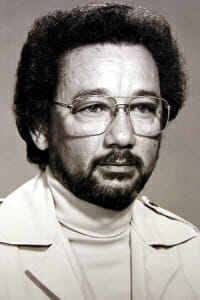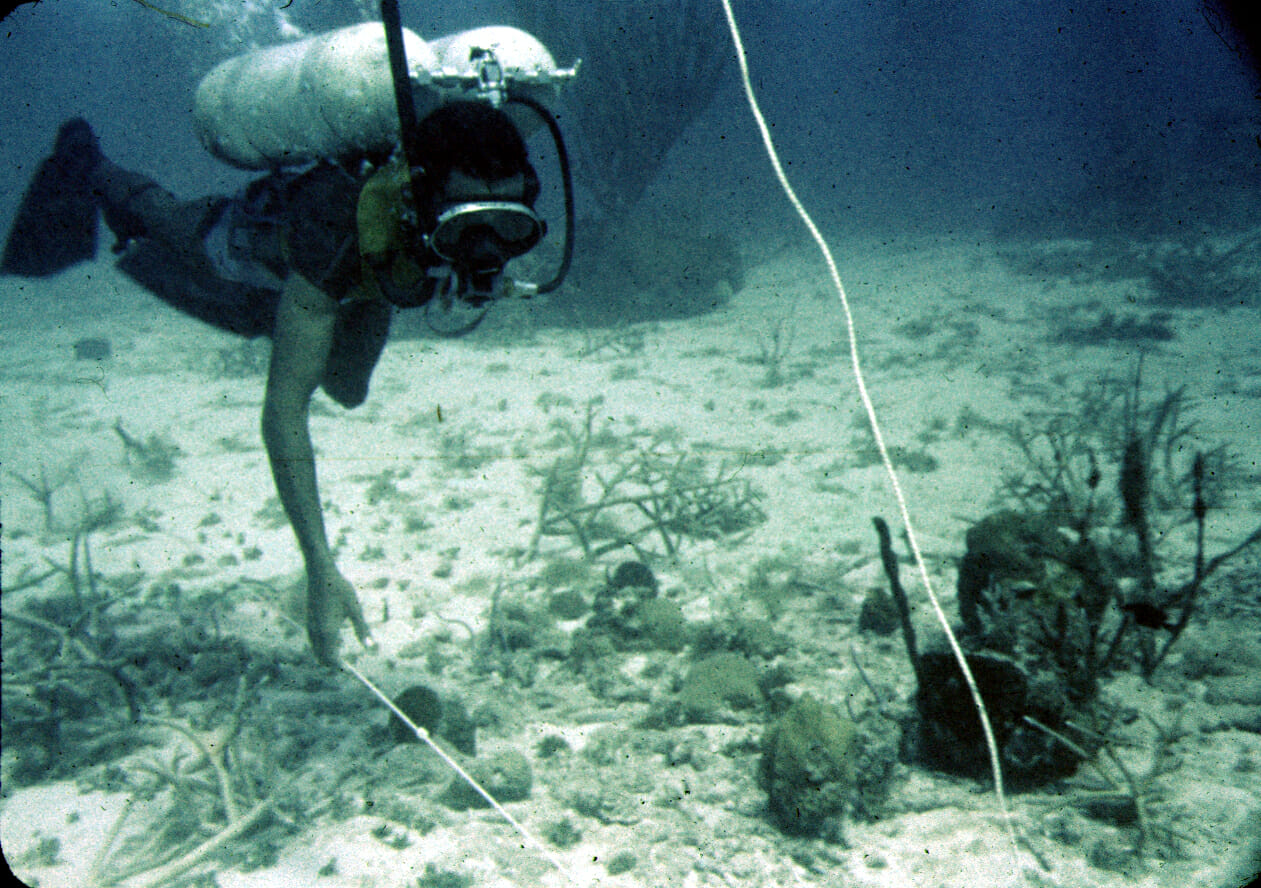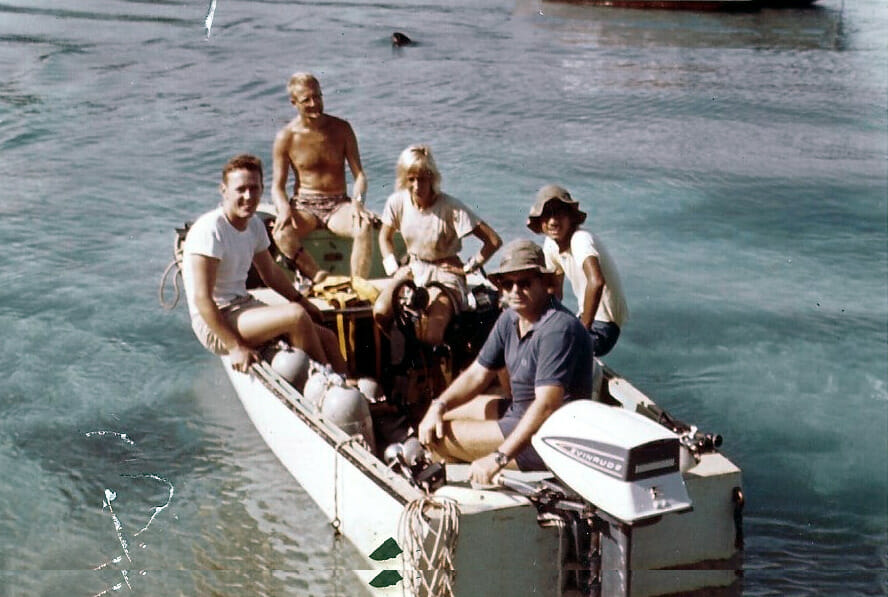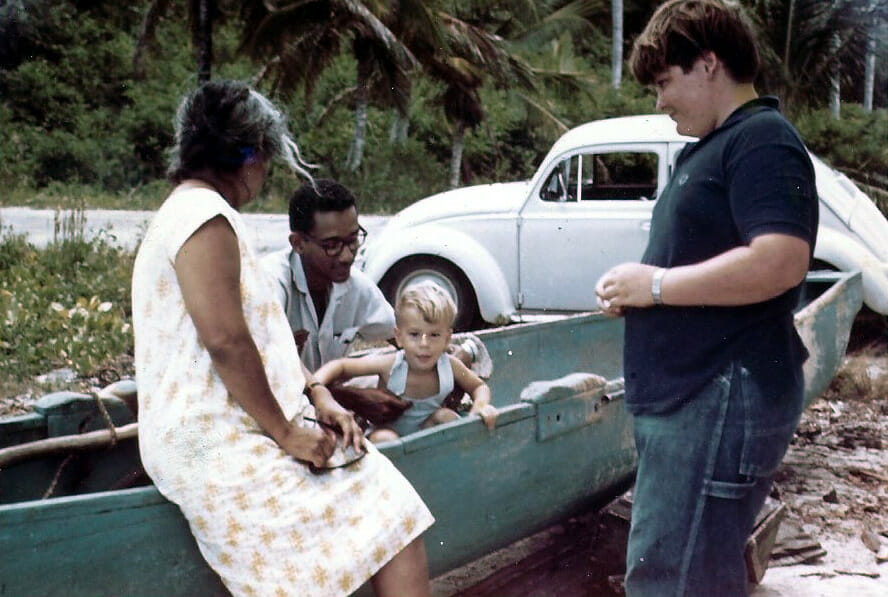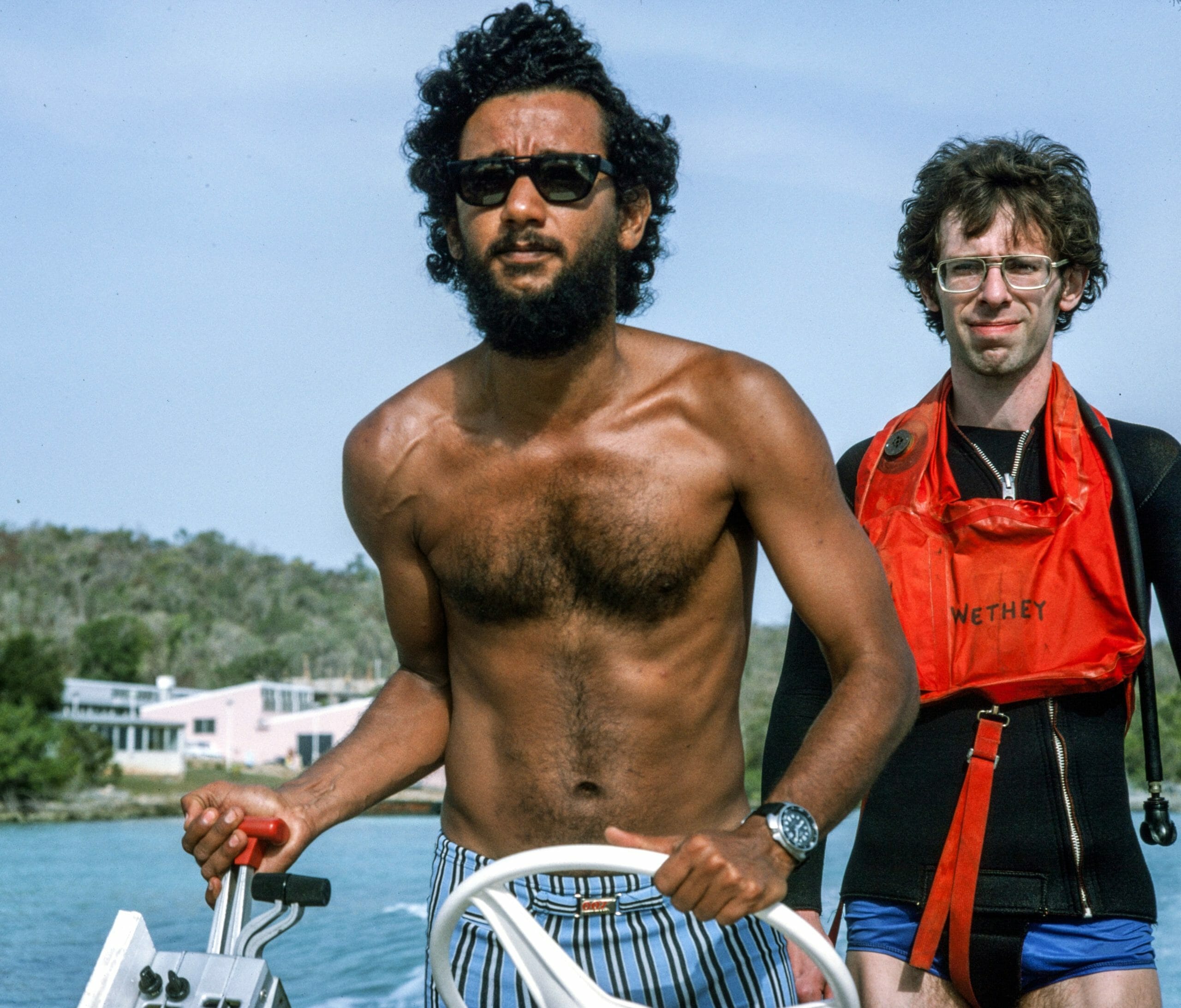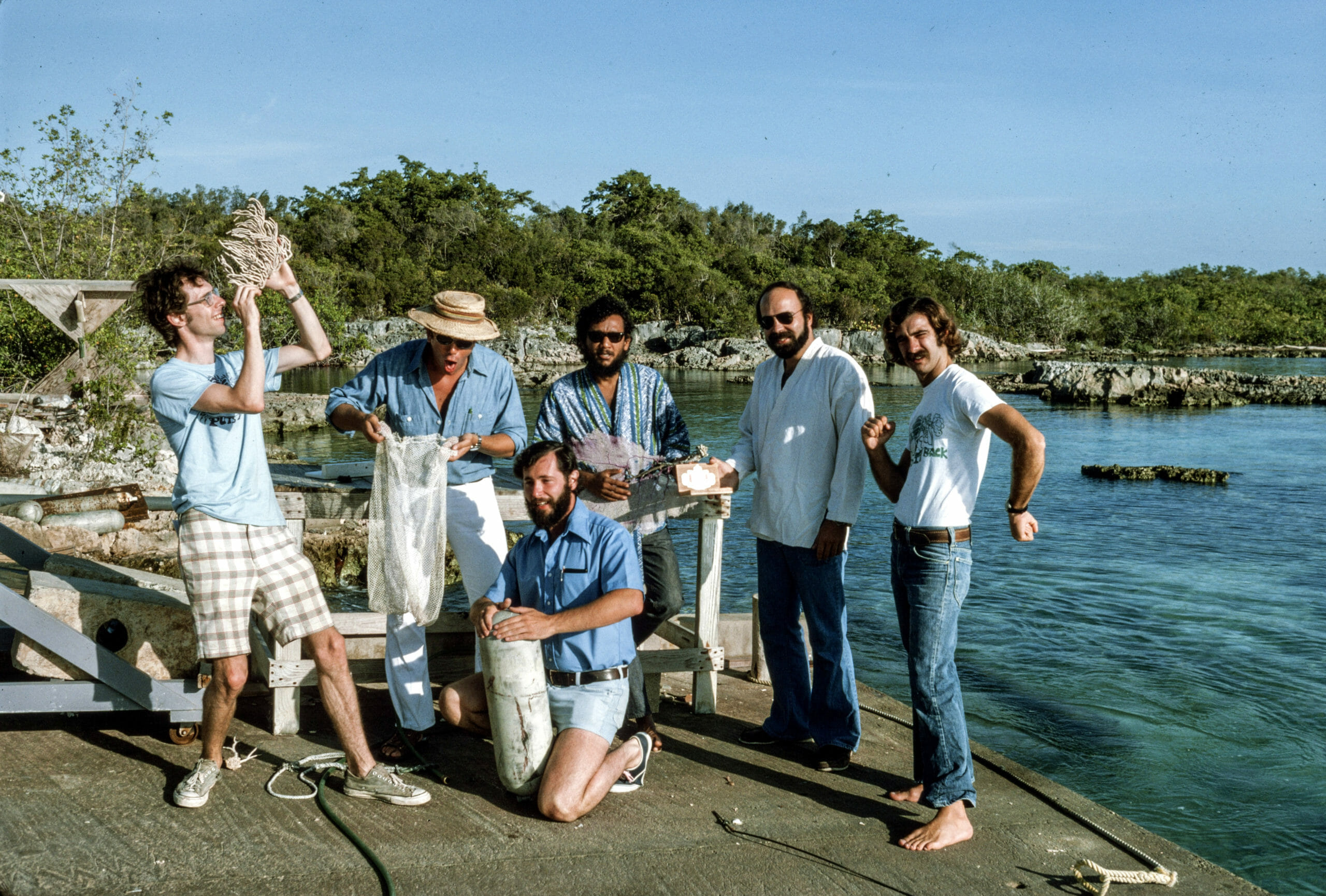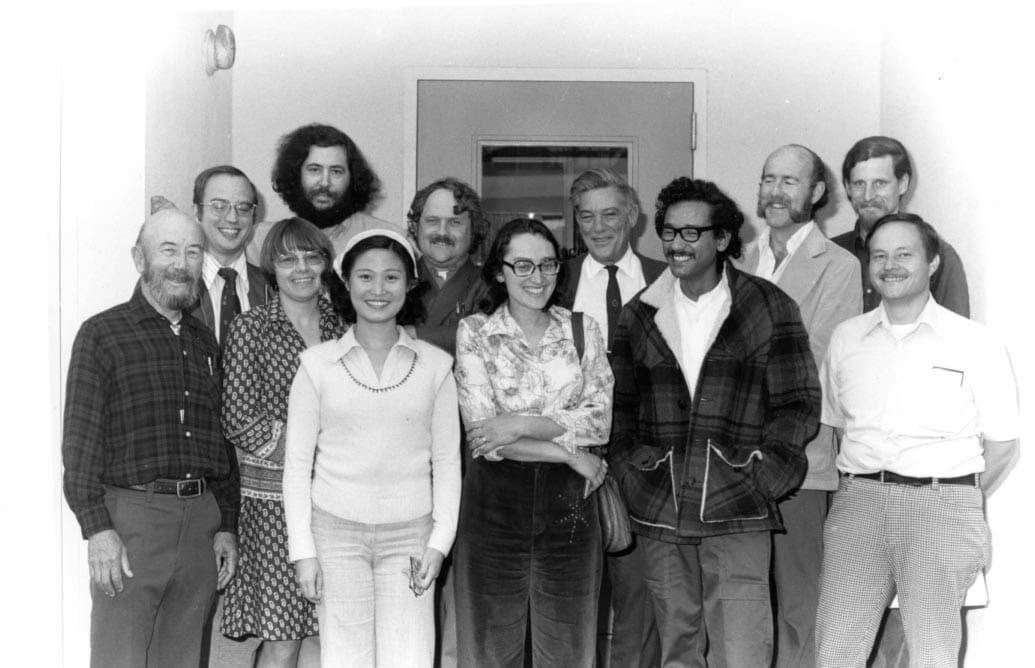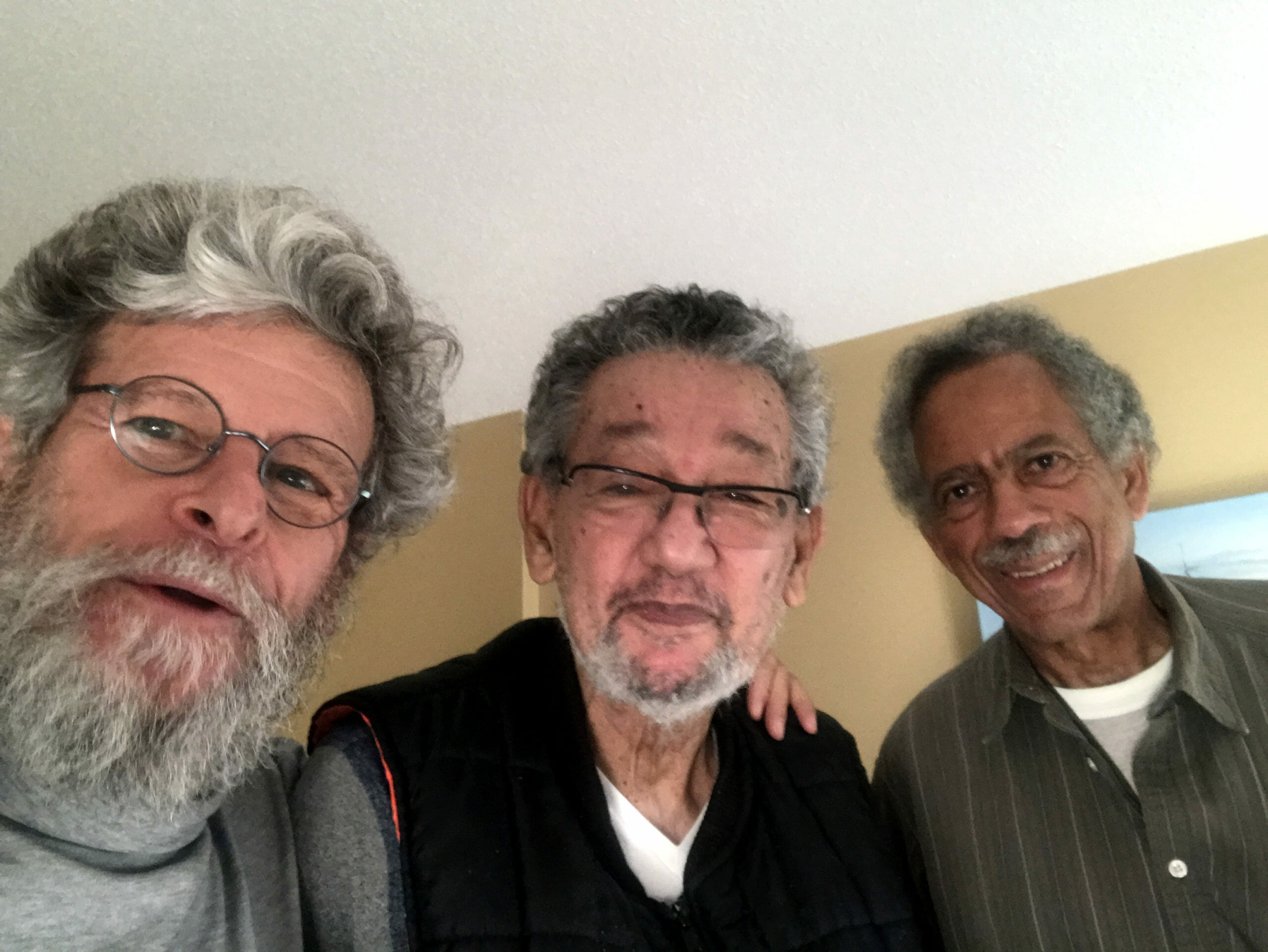ROBERT KENT TRENCH: IN MEMORIAM
August 3 1940 – April 28 2021
Thomas J. F. Goreau, PhD
President, Global Coral Reef Alliance
Bob Trench, as a Professor at the University of California at Santa Barbara.
The Global Coral Reef Alliance announces with the greatest sadness the death of Professor Robert Kent Trench, the world’s top expert on coral reef symbiosis, and GCRA’s founding Board Member.
Bob trained a generation of excellent students to explore the unexpected new world of symbiotic biodiversity he had discovered. This is not the place to list them all and outline their outstanding contributions to marine biology, which will be summarized in a parallel Memorial put together by his distinguished students, Robert Kent Trench (1940–2021): A life devoted to symbiotic mutualisms and seeking Nature’s truth, Todd C. LaJeunesse, Anastazia T. Banaszak, Charles R. Fisher, Malcolm Shick, Mark E. Warner, James W. Porter, Armand Kuris, Roberto Iglesias-Prieto, William K. Fitt, 2021, Symbiosis. This Memorial is a personal memoir of Bob’s career both before and after his academic research career discussed by Lajeunesse et al.
Bob and I met when he arrived in Jamaica as a student in the early 1960s, joined my parents’ research team, and quickly became a member of our family. I joined his group at Yale University in the early 1970s, living in his house until I could find a place of my own. He was Best Man at my wedding. We remained in constant contact, especially after his retirement, when he would phone regularly to catch up and discuss the latest coral research and ideas for hours. I probably knew him better than anyone from the very start to the very end of his exceptional career.
Bob Trench was born in Belize, British Honduras, on August 3 1940, and grew up fishing on Belize’s bountiful coral reefs, especially near Cay Caulker. When he was a boy his parents emigrated to the United States, leaving him behind with grandparents. Feeling abandoned, he found his solace in books, became a star student in high school, and applied to the University of the West Indies (UWI) in Jamaica.
His family were of mixed Indigenous Central American, Spanish, African, and Jewish origin, like my own. A true World Citizen, he was equally proud of all of his roots from many continents, and baffled and appalled by the bipolar racism he met in the United States. Bob proudly kept his second-class British Honduras Colonial passport after he left Belize City, even though it did not entitle him to live in Britain, nor as he found out to his great annoyance, even to go back to his homeland after it had become the independent nation Belize!
By sheer chance he left Belize just before it was devastated by Category 5 Hurricane Hattie, the worst hurricane in its history, on October 31 1961. There were no hurricane warnings in those days. Hattie hit when he was in Miami, changing planes on his way to Jamaica (there were no direct flights then). Hattie flattened Belize’s coral reefs and mangroves, and caused massive flooding and loss of life. It took long anxious months before he could find out if his family and friends back home had survived.
Bob quickly gravitated towards marine science and the small research laboratory in Port Royal where he joined the coral reef research team of Tom and Nora Goreau. Tom and Nora pioneered the modern study of coral symbiosis and physiology using radio-isotopes and histology. Tom taught him to dive and work underwater, and Nora showed him how to study marine organisms in the microscope. It was an exciting time full of new discoveries as coral reefs were systematically studied by diving for the first time.
After graduating from UWI in Zoology Bob went on to do his PhD with Tom’s close colleague Leonard Muscatine at the University of California at Los Angeles, characterizing the biochemical compounds exchanged between corals and their symbiotic algae, to understand how this intricate process was regulated. He received his PhD in 1969 for his thesis on The Physiology and Biochemistry of Zooxanthellae Symbiotic with Marine Coelenterates. He then did a post-doctoral fellowship with David Smith at the University of Oxford. In 1972 he became Assistant Professor of Biology at Yale University. He moved in 1976 to the University of California at Santa Barbara, retiring as full Professor in 2000.
Tom and Nora Goreau had clearly shown that symbiosis was central to coral growth and skeleton formation, and Bob set out to understand more about the symbiotic algae partners. First, he began by isolating the biochemical compounds that the algae release to their hosts to understand the metabolic pathways by which they interact. Inside the coral, symbiotic algae lose the distinctive external architecture on which their taxonomy was based, and the free-living forms are just too small to be more than fuzzy blobs in the microscope, so visible differences between the algae were essentially indistinguishable, and the generally accepted point of view was that they were all a single species. Bob expanded his mastery of histological techniques taught to him by Nora Goreau to explore the internal structures of the algae with electron microscopy, and discovered there were huge numbers of very different symbiotic algae with markedly differing internal structures and chromosome numbers. He and his students discovered there were clearly many species of symbiotic algae, generally confined to single host species, each with its own complex evolutionary history. A whole new previously hidden universe of biodiversity was suddenly revealed, which he and his students explored.
Bob was trained by Tom Goreau to become the Director of the Discovery Bay Marine Lab (DBML) after he finished his Post-Doctoral Fellowship at Oxford and could return to Jamaica, Tom wanted to focus purely on research. After Tom suddenly died in 1970 from cancer caused by nuclear radiation exposure as scientific diver at the Bikini Atoll Scientific Resurvey in 1947, control of DBML fell into the hands of British Zoology Department staff at the University of the West Indies. It was a prize they would not relinquish, though they had neither qualifications nor research visions for it. They decided that a white man was needed as director, immediately eliminating both Bob and the obvious interim director, the doubly disqualified co-founder of the lab, Nora Goreau, who would have provided the only source of continuity. Racism, overtly revealed to senior foreign researchers whose advice was sought (who were told that a “blackie” was unacceptable, a decade after Jamaica became an independent country!), was disguised locally with claims that Bob was too young, needed time to prove himself, and for Nora Goreau that a woman just couldn’t handle the job, etc. The Directorship of DBML was given to a series of men distinguished for fairness of their skin. Bob and I always joked that any Englishman who washed ashore could become Director unless he had drowned. They destroyed the lab’s fundamental research mission, turning the world’s finest tropical marine science laboratory, focused on coral reef research and training Caribbean scientists, into the very thing Tom, Nora, and Bob most wanted to avoid: a hotel for scientific tourism by visiting foreign courses.
Bob’s colleagues regarded him as the nicest person they knew, a necessary adaptation in a white world. As a scientist of color, he was systematically paraded by university administrators as their own token model of black social progress, while being very effectively discriminated against by funding agencies throughout his life. Regardless of his stellar academic career as the founder of a whole new field of symbiosis, despite admiration of great scientists like the late Lynn Margulis, his applications to US Government funding agencies were invariably rejected by funding program officers who were incompetent to understand his work, because it was “too multidisciplinary”, covering cell biology, genetics, physiology, biochemistry, evolution, and ecology. They found his proposals were just too broad for their funding programs, so they typically refused to even review them: his proposals, like those of his Caribbean colleagues, were beyond the pale! Narrow-minded rejection pursued him through his entire career, episodically and unpredictably linked to systemic concealed institutional racism. He told me shortly before he died “No matter what I do in science, to some people I will always just be a nigger, and you too”. But he never let it affect his smiling good cheer and ironic, sardonic humor.
Bob was so tired of the racism he routinely encountered, both overt and disguised, that he took Early Retirement and left the academic system at the very first possible opportunity, moving to Maine and then Quebec, in order to spend his time in natural surroundings reading and writing reviews with his former students, largely at the Universidad Nacional Autonomo de Mexico marine lab in Puerto Morelos, Quintana Roo, Mexico. He was a founding member of the Global Coral Reef Alliance Board, and worked with me to edit a pioneering book on Innovative Methods of Marine Ecosystem Restoration (T. J. Goreau & R. K. Trench (Editors), 2012, Innovative Technologies for Marine Ecosystem Restoration, CRC Press). He was an incredible editor, demanding eloquence, precision, concision, accuracy, and proper English grammar rather than loose American slang, greatly improving manuscripts with insightful and constructive critiques.
Bob never had a chance to get back to Belize until after he retired. When he finally got back home, he was bitterly disappointed, horrified and disgusted by the way the reef and the land were being destroyed by mindless greed. Although he was the most distinguished scientist Belize has produced, his advice that Belizeans should not sell land to foreigners to destroy was contemptuously rejected by his old school classmates, some who became Prime Ministers profiting from “development” schemes that killed coral reefs, as if only a fool would turn the money down.
He had only one chance to see photographs of Belize in the old days, in the oldest underwater photos from Belize in the 1960s. He was the first person I showed them to, 50 years later, shortly before his death. The photos were taken a few years after the mass destruction of Hurricane Hattie. He was excited to see that most of the coral had already grown back. That no longer happens, the reefs that he knew and loved as a boy are gone except in those rare ancient photos, the corals have been smothered by weedy algae due to unsustainable coastal “development”. The once clear blue waters of Chetumal Bay are now full of green algae slime from sewage and fertilizers. Bob’s prescient words of warning were thoroughly ignored in Belize by those who just wanted as much money as quickly as possible, and he was sadly disappointed to be a prophet with no honor in his native land. GCRA will post later several hours of interviews of his reminiscences which I made a year before he died.
The future of coral reefs and all the species that rely on them depend on the future of coral symbiosis, while global warming, pollution, and new diseases push them beyond the environmental setting that they evolved adaptation to millions of years ago. Bob shook his head at constant publicity of nonsense and hype about “reef resilience”, “adaptive bleaching to throw out bad algae and take up good ones”, “coral factories”, or “genetically engineering supercorals”, simple-minded stories successfully peddled by people telling funding agencies what they want to hear, ignoring the extremely complex regulation of the symbiosis that maintains them. Bob and his students did more than anyone to understand coral reef symbiosis, and we ignore the solid science that they did at our peril now that global warming threatens all coral reefs with extinction.
Bob was a very great scientist who was prevented from achieving the recognition his work deserved for all the wrong reasons, being too dark, too broad in his interests, too honest, and too unwilling to suffer fools. His passing is an incalculable loss to science, Belize, developing countries, coral reef ecosystems, and his family. We have lost our elder brother.
Let us save the new world of hidden biodiversity Bob Trench discovered, now severely threatened with extinction by global warming, in his memory.
Bob Trench diving, Pear Tree Bottom, Jamaica, 1965, photo by Thomas F. Goreau
From right to left, Bob Trench, Tom F. Goreau, Roma Chapman, Paul Chapman, & Lothar Bohm, Discovery Bay, 1967, photo by Thomas J. F. Goreau
Nora Goreau, Bob Trench, Stefan Goreau, and Peter Goreau, Discovery Bay, 1967, photo by Thomas J. F. Goreau
Bob Trench, Dave Wethey (right), Discovery Bay, 1974, photo by William Sacco.
Bob Trench (center) with colleagues including Dave Wethey (left), Bill Sacco (front), and Paul Sammarco (right) at Discovery Bay Marine Laboratory, 1974, photo by William Sacco.
Bob Trench with Lynn Margulis (center) and many other symbiosis researchers at the University of California at Santa Barbara. Lyn Margulis kindly sent me this 1975 symbiosis workshop photo shortly before her death.
Bob Trench (center), Tom J. F. Goreau (left), and Arlen H. Macfarlane (right), in a Quebec nursing home where he was recovering from a stroke, shortly before his death, photo by Tom J. F. Goreau. This photo was taken after Bob had just seen the first underwater photos from Belize for the first time, and after recording several hours of interviews. His mind was sharp and memory excellent.
